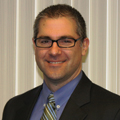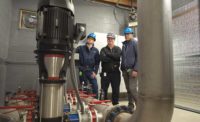
Shawn Martin is director of industry relations for the International Code Council’s Plumbing and Mechanical and Fuel Gas division, which supports plumbing, mechanical and fuel gas initiatives for ICC’s 50,000 members. Martin, previously technical director for Plumbing Manufacturers International, took time recently to talk to pme about ICC’s PMG Listing Program, sustainability and the latest developments in ICC’s codes.
pme: What impact is the PMG Listing Program having in the industry?
SM: The program has experienced its most successful year in its history in 2011, with a threefold increase in business. Notably, the program received accreditation by the Standards Council of Canada and is now recognized by the city of Los Angeles, extending recognition of the PMG certification across North America. The impact of this resurgent listing program is that it provides much-needed competition in the marketplace to drive even greater cost-effectiveness, quality, speed and customer service.
pme: What have been some of the biggest advancements in the International Plumbing Code in recent years?
SM: We’re very excited about the creation of new features called Code Action Committees. These industry-specific committees deal with complex technical issues well ahead of the code-development process, identify emerging issues and draft proposed code changes of importance to the membership. In 2011, the PMG Code Action Committee worked to create 115 new code-change proposals for the 2015 PMG codes.
pme: What are some of the hot-button/emerging plumbing technologies out there that have generated a lot of discussion recently?
SM: High-efficiency toilets remain an area of discussion, especially in commercial applications where drain-line carry concerns remain. Our hope is upcoming research will allow HETs to be more widely employed with confidence in commercial applications.
Rainwater harvesting, an old practice, has enjoyed resurgence with new technologies and as water supplies become limited. The challenge is adapting this practice into the mainstream codes and standards. To meet that need, the International Green Construction Code provides a robust rainwater section that has already been adopted in places such as North Carolina.
pme: Where is ICC headed in the immediate future?
SM: ICC recognizes our greatest asset is our members. We are renewing our commitment to represent and serve them by declaring 2012 The Year of the Member. We have put that into action with the development of the Code Action Committees and new industry-specific communities called Membership Councils.
To date 130 ICC members have joined the group. The council welcomes all ICC members. The group is led by a governing council comprised of code officials from around the country and industry leaders from organizations such as ASPE, Air Conditioning Contractors of America, Association of Pool and Spa Professionals, American Backflow Prevention Association, National Board of Boiler and Pressure Vessel Inspectors, and Sheet Metal and Air Conditioning Contractors’ National Association. We’re looking forward to them playing a greater role in the industry this year.
pme: Are there any other new initiatives on the horizon for ICC in terms of plumbing/green plumbing-related topics?
SM: Absolutely. In 2012, code development for the 2015 IPC will take place. Quite a few code proposals inspired by the IgCC have been proposed for inclusion in the IPC, so the code development hearing to be held in May in Dallas will be both interesting and exciting.
ICC has created an extract version of the IgCC called the Water Efficiency Extract. It takes the indoor and outdoor water-related provisions in the IgCC and extracts them verbatim and places them in a separate document. By adopting the IgCC Water-Efficiency Provisions, jurisdictions can address water issues quickly and in a way that works with ICC’s other codes such as the IBC, IPC and IECC.
The PMG Membership Council also will be getting up to speed, so stay tuned for even more initiatives there.
pme: Where do you see water quality/conservation/treatment headed?
SM: There is a lot of work to do and there probably always will be. Supplies are constrained and in some cases being depleted, so it is imperative we take this issue seriously. Not only that, there is a substantial amount of energy that goes into treating potable water and disposing of wastewater. In order to make a serious difference, we need to address the whole problem – indoor use and outdoor use, supply and demand.
On the supply side, we need to get serious about non-potable use. Right now, we have laws and regulations regarding non-potable water use that widely vary across the country. A concerted effort to harmonize these requirements is sorely needed.



